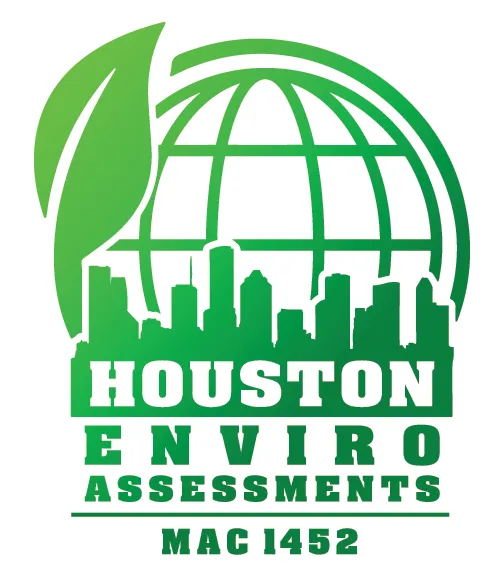Fox Residential
Environmental Inspections
Providing Peace Of Mind, One Home At A Time, Since 1989!
Fox Residential Services Group, LLC is proud of its 25+ years of service to the Houston Metro area.
We Now Provide Air Quality / Mold Inspections
Mold Clean-Up and Removal
To clean up and remove indoor mold growth, follow steps 1-6 as they apply to your home.
1. Identify and Fix the Moisture Problem
The most important step in solving a mold problem is to identify and correct the moisture sources that allowed the growth in the first place. Common indoor moisture sources include:
Flooding
Condensation (caused by indoor humidity that is too high or surfaces that are too cold)
Movement through basement walls and slab
Roof leaks
Plumbing leaks
Overflow from tubs, sinks, or toilets
Humidifier use
Firewood stored indoors
Humidifier use
Inadequate venting of kitchen and bath humidity
Improper venting of combustion appliances
Failure to vent clothes dryer exhaust outdoors (including electric dryers)
Line drying laundry indoors
House plants - watering them can generate large amounts of moisture
To keep indoor surfaces as dry as possible, try to maintain the home's relative humidity between 20-40 percent in the winter and less than 60 percent the rest of the year. You can purchase devices to measure relative humidity at some home supply stores.
Ventilation, air circulation near cold surfaces, dehumidification, and efforts to minimize the production of moisture in the home are all very important in controlling high humidity that frequently causes mold growth in our cold climate.
2. Begin Drying All Wet Materials
as soon as possible, begin drying any materials that are wet. For severe moisture problems, use fans and dehumidifiers and move wet items away from walls and off floors. Check with equipment rental companies or restoration firms to see if you can rent fans and dehumidifiers.
3. Remove and Dispose of Mold Contaminated Materials
items which have absorbed moisture (porous materials) and which have mold growing on them need to be removed, bagged and thrown out.
Such materials may include sheet rock, insulation, plaster, carpet/carpet pad, ceiling tiles, wood products (other than solid wood), and paper products. Likewise, any such porous materials that have contacted sewage should also be bagged and thrown away. Non-porous materials with surface mold growth may be saved if they are cleaned well and kept dry (see step 4).
Take Steps to Protect Yourself - the amount of mold particles in air can increase greatly when mold is disturbed. Consider using protective equipment when handling or working around mold contaminated materials. The following equipment can help minimize exposure to mold:
Outer clothing (long sleeves and long pants) that can be easily removed in the work area and laundered or discarded
Medium-efficiency or high-efficiency filter dust mask (these can be found at safety equipment suppliers, hardware stores, or some other large stores that sell home repair supplies) -- at a minimum, use an N-95 or equivalent dust mask
Take Steps to Protect Yourself - the amount of mold particles in air can increase greatly when mold is disturbed. Consider using protective equipment when handling or working around mold contaminated materials. The following equipment can help minimize exposure to mold:
4. Clean Surfaces
surface mold growing on non-porous materials such as hard plastic, concrete, glass, metal, and solid wood can usually be cleaned. Cleaning must remove and capture the mold contamination, because dead spores and mold particles still cause health problems if they are left in place.
Thoroughly scrub all contaminated surfaces using a stiff brush, hot water and a non-ammonia soap/detergent or commercial cleaner
Collect excess cleaning liquid with a wet/dry vacuum, mop or sponge
Rinse area with clean water and collect excess rinse water
5. Disinfect Surfaces
(if desired) - after cleaning has removed all visible mold and other soiling from contaminated surfaces, a disinfectant may be used to kill mold missed by the cleaning. In the case of sewage contamination, disinfection must be performed. Contact your home inspector for advice.
Mix 1/4 to 1/2 cup bleach per gallon of water and apply to surfaces where mold growth was visible before cleaning. The solution can be applied with a spray bottle, garden sprayer, it can be sponged on, or applied by other methods.
Collect any run-off of bleach solution with a wet/ dry vacuum, sponge or mop. However, do not rinse or wipe the bleach solution off the areas being treated -- allow it to dry on the surface.
Always handle bleach with caution. Never mix bleach with ammonia -- toxic chlorine gas may result. Bleach can irritate the eyes, nose, throat, and skin. Provide fresh air (for example, open a window or door). Protect skin and eyes from contact with bleach. Test solution on a small area before treatment, since bleach is very corrosive and may damage some materials.
6. Remain on Mold Alert
Continue looking for signs of moisture problems or return of mold growth. Be particularly alert to moisture in areas of past growth. If mold returns, repeat cleaning steps and consider using a stronger solution to disinfect the area again. Regrowth may signal that the material should be removed or that moisture is not yet controlled.
When can we rebuild?
Rebuilding and refurnishing must wait until all affected materials have dried completely. Be patient: it takes time to dry out wet building materials.
We Now Provide Air Quality / Mold Inspections

Fox Residential Services Group, LLC 8616 Daffodil Street Houston, TX 77063